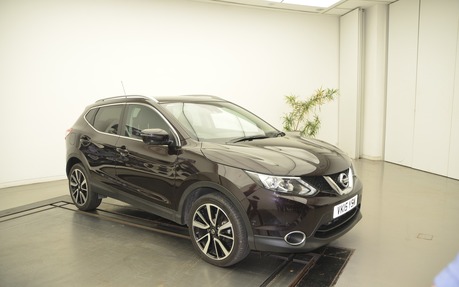2017 Nissan Qashqai: More Than Just a Funny Name
Sure, Qashqai is an unusual name, but no more so than Koenigsegg or Bentayga (in a totally different class of car, mind you). The Qashqai has just made its North America debut at the Detroit Auto Show. Elsewhere in the world, this little SUV has been on the road since 2007.
Background info: Qashqai is the name of a people that lives in the mountains of southwest Iran. It’s a bit of a stretch, I know, but since Volkswagen had already touched on the desert with the Touareg, Nissan figured it would go with the same winning formula.
Already well-known in Europe
The first-generation Qashqai began as a concept car introduced at the 2004 Geneva Auto Show. The following year, the Qashqai arrived on the market as a 2006 model and was wildly successful across Europe. After a remodelling in 2010, the second generation appeared in 2014 and this little SUV continued to rake in solid sales. All told, no fewer than 2.5 million units of the Qashqai have been sold since 2006—not too shabby!
And yet, Nissan has only now decided to import it to North America. The reason is simple: the market is changing. Only a few years ago, the subcompact SUV segment (Nissan JUKE, Honda HR-V, Chevrolet Trax, Subaru Crosstrek, etc.) didn’t even exist here. Today, it’s exploding, and Nissan knows that the JUKE’s style is too flashy to appeal to the masses, so they needed another solution to carve out a place in the big world of small SUVs.

Between the JUKE and the Rogue
Size-wise, the Qashqai fits between the extroverted JUKE and the understated Rogue. Those who need enough room for two baby seats and at least one stroller will opt for the Rogue, while childless couples and empty-nesters could be tempted by the nicely crafted (this is a personal opinion, of course) Qashqai. And since small SUVs are all the rage right now, it’s a safe bet that the Qashqai will be successful here. Nissan is predicting a 10 to 20 percent decrease in JUKE sales, which isn’t anything dramatic. After all, 10 to 20 percent of not much is still not much.
2.0 litres, 141 horsepower
The Qashqai sold on this side of the Atlantic will feature a 2.0-litre four-cylinder direct injection engine that develops 141 horsepower and 147 lb.-ft. of torque. In other words, the GT-R has nothing to worry about in a 0-100 km/h sprint against the Qashqai. We even had the chance to drive a one, albeit the Russian version. Read our 2017 Nissan Qashqai review for details.
Interestingly, the basic version will have a six-speed manual transmission paired with front-wheel drive. I predict that in two years, this gearbox will no longer be offered due to lack of public interest: more on that in January 2019.
All other versions will come with Nissan’s near-and-dear automatic CVT. Already found in the 2017 Rogue, the latest generation Xtronic simulates the shifting of a conventional automatic and can be combined with front- or all-wheel drive. By the way, the Qashqai is built on the CMF (Common Module Family) platform also used for the Nissan Rogue and numerous small SUVs offered by Nissan, Renault and Datsun.
North American version
In the countries where Justin and Donald call the shots, the Qashqai will be slightly different from its European counterpart. We can expect modifications to the dashboard, the four wheel independent suspension calibration and the engine to meet North American standards. The equipment levels will be the same as what we’re used to seeing from Nissan. The basic version will be known as the S, and Nissan’s hierarchy will be respected with the SV and SL variants as well.
The Qashqai won’t arrive at dealerships before May or June 2017 so the prices aren’t official yet, but since it will fall between the JUKE and the Rogue, the price is likely to be somewhere between the two (unless Nissan revises its pricing policy). Therefore, expect the base price to be about $24,000, with the high-end version topping out around $35,000. But those are just predictions at this juncture.
We’ll keep you in the loop as more information becomes available.
